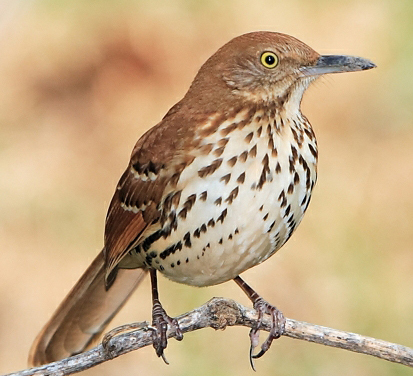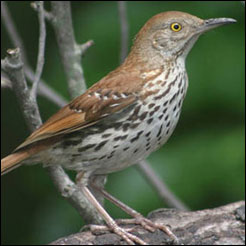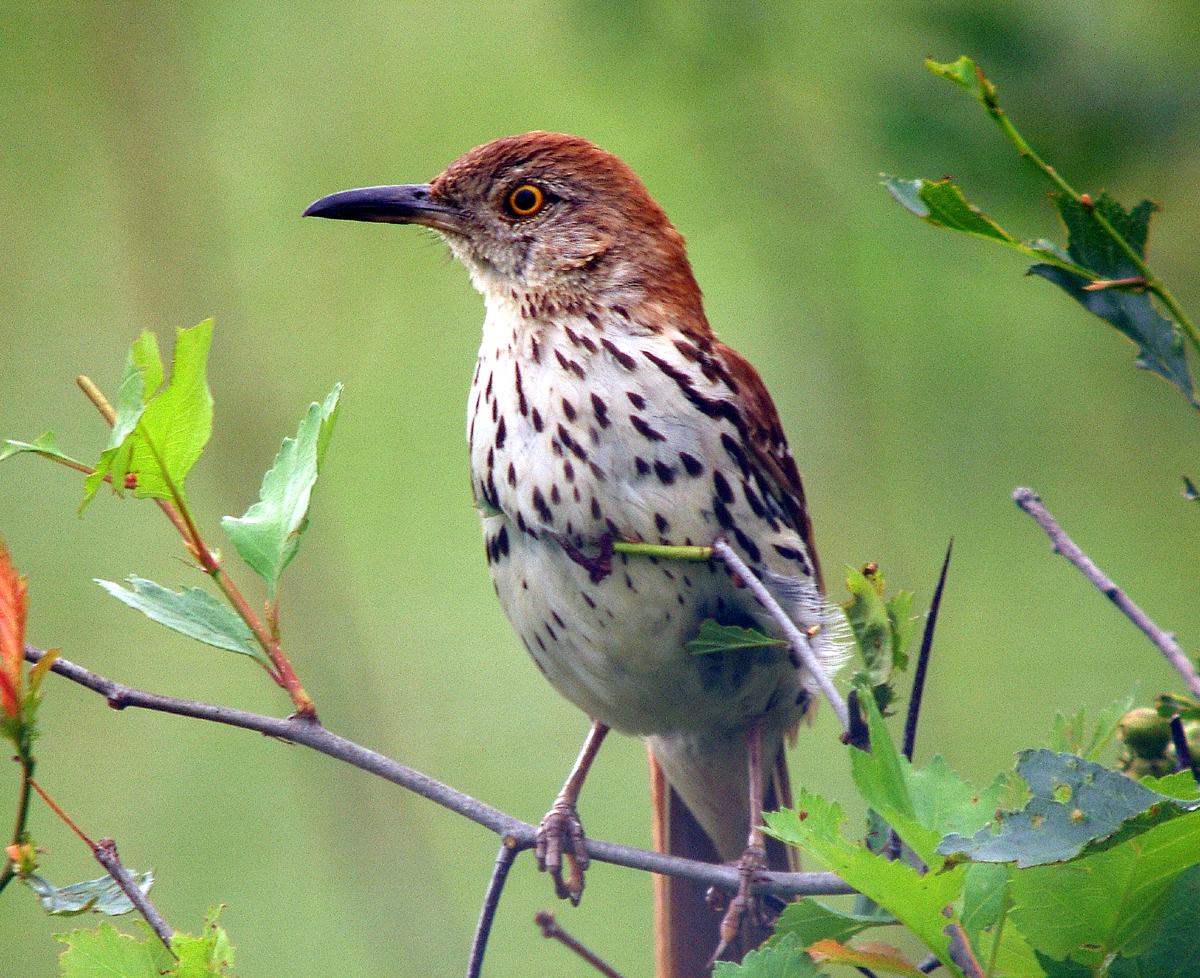
Toxostoma rufum
TAXONOMY
Turdus rufus Linnaeus, 1758, Carolina. Two subspecies.
OTHER COMMON NAMES
French: Moqueur roux; German: Rotrьcken-Spottdrossel;
Spanish: Cuitlacoche Rojizo.
PHYSICAL CHARACTERISTICS
10–11 in (25.5–28 cm); 2–3.2 oz (57.6–89 g) Upperparts deep
rufous-brown, two whitish wing-bars on covert edges, underparts
buffy-white with conspicuous blackish tear-drop shaped
markings, eye yellow, bill brownish with flesh-colored base,
legs brownish.
DISTRIBUTION
T. r .rufum breeds in eastern North America from New
Brunswick and Maine south to Florida and west to central Ontario.
T. r. longicauda breeds from western Ontario to southern
Alberta, south to northeast New Mexico and central Oklahoma.
The species winters from coastal Massachusetts to Texas, north
to southern Illinois and Indiana. Vagrant to England, Bermuda,
northern Alaska, Cuba, Bahamas, and northern Mexico.
HABITAT
Brushy areas, field-edges with hedges, well-vegetated suburbs,
abandoned farmland.
BEHAVIOR
Not particularly shy. Spends most of its time on or near
ground, but frequently sings from high exposed perches. Song
Nesomimus macdonaldi
is an attractive series of loud musical phrases, each phrase usually
repeated, the whole song often continuing for several minutes
at a time.
FEEDING ECOLOGY AND DIET
Food is very varied; many invertebrates including caterpillars,
spiders, grasshoppers, and crayfish, also small frogs, snakes, and
lizards; vegetable matter, especially berries, but also acorns,
corn etc. Feeds mostly on the ground, probing into soft soil,
sweeping aside leaf litter with sideways movements of the bill.
REPRODUCTIVE BIOLOGY
Nest is a bulky open cup, built of thorny twigs and lined with
grass stems etc., located as high as 20 ft (6 m) in trees or
bushes, but also frequently on the ground; built by both sexes.
Eggs three to five, rarely only two, pale bluish white with fine
reddish dots. Incubation by both sexes, 11–14 days; young fed
by both sexes. Usually double-brooded.
CONSERVATION STATUS
Not threatened. Probably benefited from the spread of agriculture
and especially from the abandonment and re-vegetation of
marginal cropland. However, recent significant declines in
overall population in Ontario and by implication elsewhere.
SIGNIFICANCE TO HUMANS
A popular and well-known species, the state bird of Georgia.
Other popular Animals
Photo Gallery of - Brown thrasher




 Animalia Life
Animalia Life